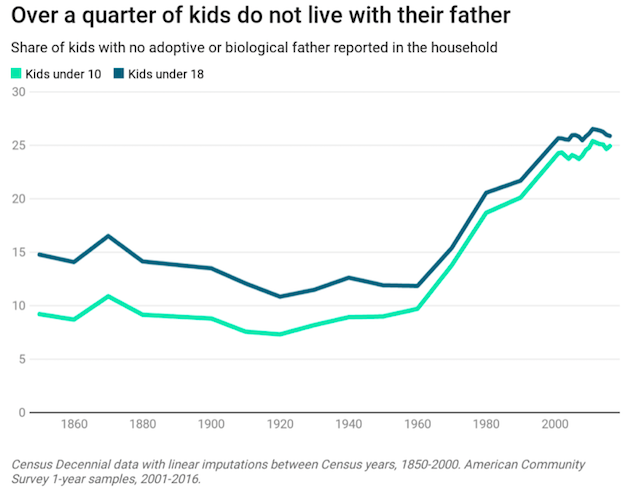Highlights
The first American celebration of Father’s Day commemorated a mining disaster that left over 1,000 children fatherless. At the time, in the early 1900s, it was very unusual for children to live without their dads: According to our analysis of Census data, fewer than 8 percent of kids under 10 lived in a household, not including their biological or adoptive father (a category that excludes stepdads and foster parents). Today, that number is one in four.

The primary driver of this trend is not a spike in male mortality like the Civil War (which caused the uptick you can see in the 1870 census above). Rather, its two main causes are more incarceration and less marriage. Rising rates of fatherlessness have not affected all kids equally. For instance, the share of kids living apart from their dads varies widely by race or ethnic group, ranging from 57 percent for African Americans, to 28 percent for Hispanics, to 16 percent for non-Hispanic whites, and 10 percent for Asians.
One reason is that minority men are more likely to be incarcerated. As of 2016, only 0.4 percent of non-Hispanic white men over 15 were incarcerated, according to Justice Department data, versus 2.6 percent of minority males in the same age range. America’s overall incarceration rate more than quadrupled between 1980 and 2008 and has declined only slowly since.
Men in prison can’t be fathers in the household. These high rates of incarceration result in large numbers of separated families, and even when fathers are released from prison, ongoing supervision can make normal family life extremely challenging.
Continue reading at National Review . . . .











